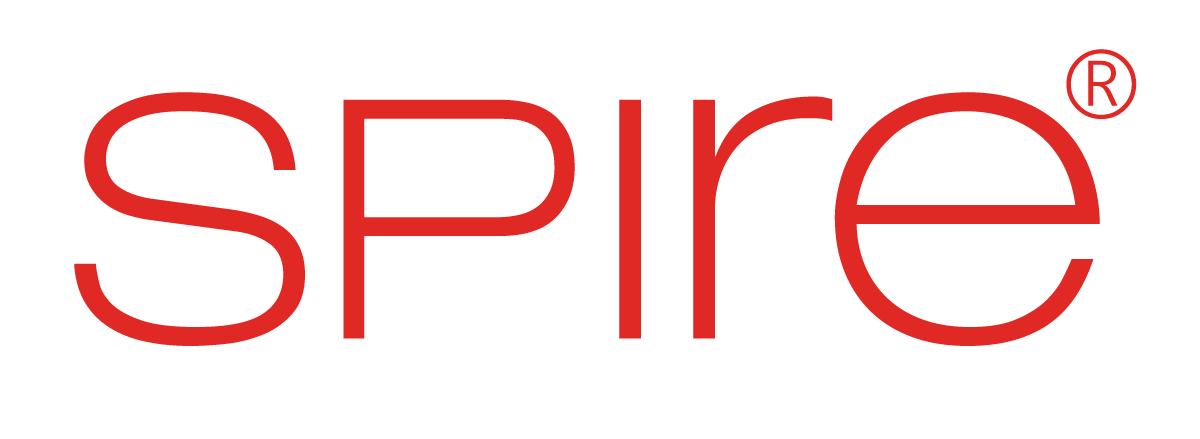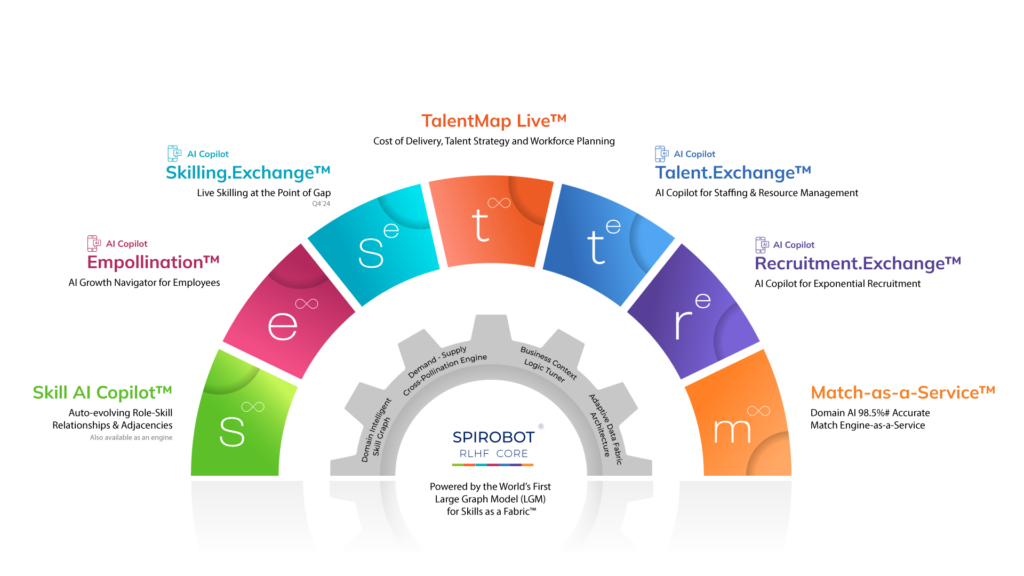HR leaders often focus on external hiring to fill skill gaps, yet many fail to recognize the hidden cost of underutilized internal talent. Organizations spend millions on recruiting, onboarding, and training new employees while overlooking existing talent with the potential to take on greater challenges. This lack of talent visibility results in lost opportunities, disengaged employees, and unnecessary hiring expenses.
The traditional approach to workforce planning where skills are locked in static job descriptions fails to reflect the agility required in today’s workplaces. As roles evolve, companies need to shift toward internal talent visibility, ensuring that employees’ skills, ambitions, and potential are recognized and leveraged effectively.
Unlocking ROI Through Talent Visibility
HR and talent leaders must justify talent investments with measurable ROI. Talent visibility is not just a workforce enhancement tool it directly impacts financial performance, operational efficiency, and employee satisfaction. A robust internal talent strategy results in tangible benefits:
- Reduced Hiring Costs: Identifying and mobilizing internal talent eliminates the need for expensive external recruitment. Organizations save on hiring costs, recruitment fees, and onboarding expenses while maximizing the skills already present within the company.
- Higher Employee Engagement and Retention: Employees who see growth opportunities within their company are more likely to stay, reducing attrition rates. Increased engagement leads to higher productivity, innovation, and workplace satisfaction.
- Faster Skill Deployment: Upskilling or reskilling existing employees ensures a seamless transition into new roles. Internal hiring and lateral movement significantly reduce the time-to-productivity compared to external hiring, which often comes with learning curves and cultural adjustments.
- Improved Workforce Agility: Organizations that prioritize talent visibility can respond swiftly to market shifts and evolving business needs. Instead of scrambling to hire externally, leaders can tap into their existing workforce for immediate solutions.
- Data-Driven Workforce Planning: A well-structured approach to talent visibility allows HR teams to anticipate skill shortages, succession needs, and future workforce trends, making strategic decisions based on real-time insights rather than reactive hiring.
Organizations unlock efficiencies and optimize workforce potential without increasing headcount by shifting the focus from external hiring to internal mobility. Talent visibility becomes a competitive advantage when implemented correctly, enabling businesses to stay ahead in an increasingly skills-driven economy.
Identifying and Mapping Internal Talent
To achieve true internal talent visibility, organizations must move beyond outdated methods of skills tracking. Traditional skills inventories and manual talent assessments are static, often outdated, and fail to reflect an employee’s growth over time.
Instead, businesses need to adopt an AI-powered, real-time talent mapping framework that ensures skills are continuously tracked and aligned with business needs. These advanced solutions offer the following added advantages.
- Real-Time Skills Mapping: AI-driven platforms analyze employees’ actual work, training, and collaborative efforts to dynamically update skill profiles. This real-time approach ensures that an employee’s current skill set is always accurately reflected, allowing managers to quickly identify emerging competencies.
These platforms integrate data from multiple sources, including performance reviews, project contributions, and learning modules, to create a living skills inventory that evolves alongside the workforce.
- Hidden Strength Identification: Employees often possess skills and expertise that go unnoticed due to rigid job descriptions. AI enables organizations to uncover latent strengths and untapped potential by analyzing work patterns, informal learning experiences, and employee networks.
For example, an employee working in customer support may have exceptional analytical skills, making them a strong candidate for data-driven roles. By leveraging AI insights, organizations can uncover talent that would otherwise remain hidden and also optimize bench resource allocation.
- Predictive Career Pathing: Advanced talent intelligence models can forecast future career trajectories, providing employees with personalized development opportunities that align with organizational needs. These models assess an individual’s historical performance, interests, and potential growth areas to recommend career paths that maximize both employee engagement and business impact.
This proactive approach enables organizations to retain top talent by offering well-defined internal mobility options, ensuring that employees can see a clear progression within the company.
- Matching Skills with Business Demands: Rather than relying on external hires to fill emerging roles, businesses can identify internal candidates who can transition into new positions with minimal upskilling. AI-driven skill matching ensures that employees with transferable skills are quickly placed into roles that align with both their strengths and business priorities.
This approach reduces hiring costs, accelerates time-to-productivity, and fosters a culture of internal mobility, where employees feel valued and empowered to grow within the company.
Organizations that embrace these AI-powered workforce insights unlock greater efficiency, ensuring that employees’ evolving capabilities are continuously leveraged to drive business success.
Breaking Down Silos: Enabling Internal Talent Mobility
Even when organizations recognize internal talent, many struggle to mobilize it. Organizational silos, outdated career frameworks, and limited cross-functional visibility restrict employees from transitioning into new roles. Without a strategic approach, talent remains trapped within departments, unable to contribute fully to business objectives.
HR and talent leaders must rethink traditional career progression models by following the below strategic approaches.
- Building Transparent Career Pathways: Employees should clearly see how they can grow within the organization. This requires a structured internal mobility framework, where employees are provided with accessible career roadmaps, clear skill requirements, and opportunities to develop competencies for their next role.
- Encouraging Cross-Functional Moves: Many employees have skills that are highly transferable across functions, but internal bureaucracy and rigid departmental boundaries prevent them from exploring lateral moves. Organizations should foster a culture of mobility, allowing employees to gain experience in different business areas and improve adaptability.
>Encouraging rotations, project-based assignments, and cross-functional collaborations help maximize talent utilization.
- Creating Skills-Based Job Architectures: Static job titles often restrict growth by confining employees to predefined roles. A skills-based job architecture shifts the focus from titles to capabilities, making career progression fluid and based on competencies rather than hierarchical constraints. This helps businesses adapt to change by dynamically redeploying employees where they are most needed.
A well-structured internal mobility strategy not only improves retention but also enhances innovation by allowing employees to apply their skills in new and impactful ways. By breaking down traditional silos and embracing a flexible, skills-focused approach, organizations can fully harness their internal talent and ensure that workforce potential is maximized.
How Spire.AI Solves Talent Invisibility
Many organizations recognize the importance of internal mobility but struggle to implement it effectively. Spire.AI addresses these challenges with a comprehensive, AI-driven platform designed to unlock hidden workforce potential and optimize internal talent mobility.
AI-Driven Skill Discovery
Spire.AI’s Domain-Intelligent AI maps employees’ real-time skills and capabilities, moving beyond traditional HR databases that rely on outdated or self-reported information. By continuously analyzing real work data such as project contributions, collaboration patterns, and professional development activities, Spire.AI creates accurate, evolving skill profiles for every employee, providing HR leaders with deep insights into internal workforce potential.
- Automated Skill Extraction: Spire.AI continuously collects and refines skill data from real-time work activity, providing an up-to-date and comprehensive skill inventory.
- Deep Learning Insights: The system identifies patterns and skill adjacencies, ensuring a broader understanding of an employee’s growth potential and multi-domain expertise.
- Role-Specific Recommendations: AI suggests new career paths and upskilling opportunities tailored to both business needs and employee ambitions.
LGM for Skills: Precision in Talent Matching
Using the Large Graph Model (LGM) for Skills, Spire.AI dynamically maps skills to roles, enabling HR leaders to make data-backed decisions on internal mobility, succession planning, and workforce transformation. This ensures optimal talent deployment without the inefficiencies of external hiring.
- Real-Time Talent Alignment: By leveraging LGM for Skills, Spire.AI dynamically aligns employees’ evolving skills with current and future business needs.
- Predictive Succession Planning: AI-driven models help organizations plan by identifying employees with leadership potential and ensuring seamless role transitions.
- Skill Gaps Identification: Spire.AI pinpoints areas where training or upskilling is required, allowing organizations to make targeted learning investments.
Role-Skill Architecture: The Future of Workforce Planning
The future of workforce planning is shifting from rigid job roles to skill-based workforce strategies, allowing organizations to be more agile, data-driven, and resilient. This transformation is driven by several key trends.
- AI-Powered Workforce Insights: AI-driven analytics are becoming central to workforce planning, enabling HR leaders to predict future talent needs based on evolving business priorities. AI provides real-time insights into workforce trends, identifies skill gaps, and offers data-driven recommendations to optimize talent utilization.
- Skills Over Job Titles: According to the World Economic Forum, 50% of employees will need reskilling by 2025, emphasizing the shift from traditional job roles to skill-based career paths. Companies that prioritize skills over job titles can create more adaptable, future-ready workforces that evolve with business demands.
- Gig and Project-Based Work Models: McKinsey reports that 36% of employees now engage in freelance or gig work, signaling a growing trend towards flexible, project-based talent deployment. Organizations are leveraging internal talent pools to assign employees to short-term projects, increasing workforce efficiency and reducing dependency on external hiring.
- Automated Workforce Planning: Organizations are increasingly using AI-powered role-skill architecture to dynamically align skills with business needs, reducing redundancy and improving workforce agility. This ensures that employees can seamlessly transition into new roles based on their evolving competencies rather than rigid job descriptions.
- Personalized Learning & Development: Data-driven L&D strategies help employees continuously upskill in alignment with future business demands, ensuring an adaptable and future-ready workforce. AI-powered learning platforms offer personalized training programs tailored to employees’ career aspirations and business objectives.
- Diversity, Equity, and Inclusion (DEI) in Workforce Planning: As businesses embrace skill-based workforce planning, DEI initiatives are becoming integral to ensuring that talent decisions are unbiased and equitable. AI helps organizations analyze and address skill gaps among underrepresented groups, creating a more inclusive workplace.
Spire.AI’s role-skill architecture is built around these trends, helping companies transition into skill-based workforce planning. It enables businesses to,
- Continuously update workforce capabilities in real time, ensuring employees remain aligned with business goals. This includes leveraging AI-powered analytics to assess employee performance and proactively address evolving business needs.
- Identify emerging skills gaps and address them proactively, reducing workforce risks and future-proofing talent strategies. AI-driven insights help predict areas where additional training and development are required before productivity is impacted.
- Align employee development with business strategy, ensuring workforce readiness for future roles and minimizing talent shortages. Organizations can use Spire.AI to create tailored learning pathways, helping employees acquire the skills needed for upcoming job roles.
- Improve workforce fluidity, allowing employees to move across roles seamlessly based on competency fit rather than job title. By dynamically mapping employees to relevant roles, businesses can optimize internal mobility and human resource allocation, increasing engagement and reducing turnover.
- Enhance internal mobility, enabling employees to pursue career growth opportunities within the organization instead of seeking external job changes. AI-enabled career progression models allow employees to visualize their potential career paths within the company and access development resources tailored to their ambitions.
- Reduce hiring costs, as organizations can upskill existing employees instead of relying on expensive external recruitment. By investing in internal workforce development, businesses can lower recruitment expenses while improving employee satisfaction and retention.
By leveraging AI-powered workforce insights, dynamic role-skill architectures, and personalized learning strategies, organizations can future-proof their workforce, maximize efficiency, and create a thriving, engaged employee base.
Elevate Workforce Potential Without Increasing Headcount
HR leaders no longer need to choose between hiring externally and stagnating internally. By prioritizing talent visibility and internal mobility, organizations can maximize workforce potential, reduce hiring costs, and create a thriving, engaged employee base. Solutions like Spire.AI provide the technology and insights needed to transform workforce planning and unlock the hidden value within existing employees.






